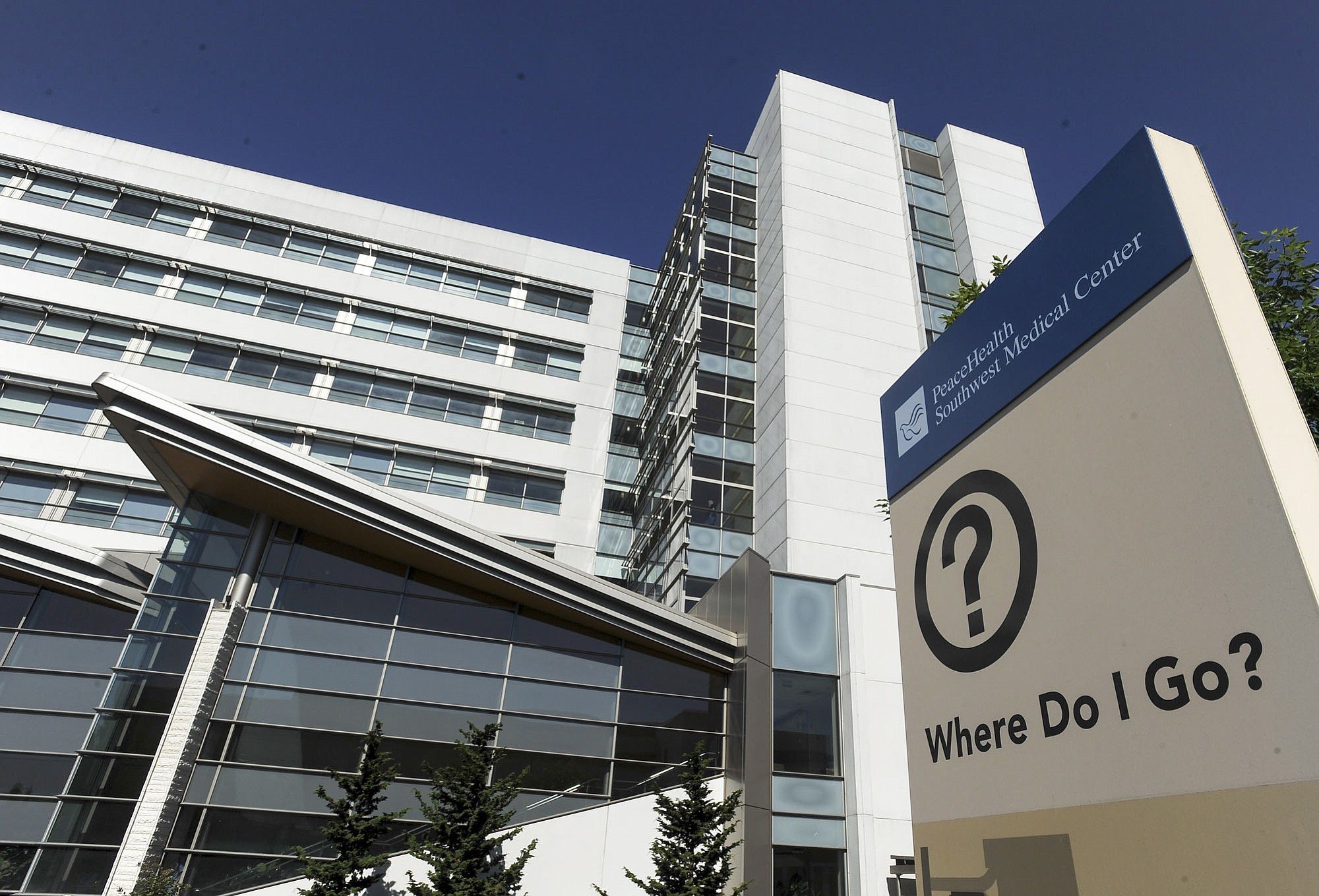• December 2010: Southwest Washington Medical Center and PeaceHealth finalize merger and announce the new hospital name, PeaceHealth Southwest Medical Center.
• May 2011: PeaceHealth confirms moving its headquarters from Bellevue to Columbia Center at Columbia Tech Center in east Vancouver.
• August 2012: Leaders from PeaceHealth and Englewood, Colo.-based Catholic Health Initiatives announced a nonbinding letter of intent to create a regional health care system with operations based in Vancouver.
• January 2013: Kaiser Permanente Northwest announces new contract with Legacy Salmon Creek Medical Center, effective Oct. 1, ending a 15-year relationship with Southwest Medical Center.
• April 2013: PeaceHealth and Catholic Health Initiatives say they are "unable to develop an integrated model that would provide the desired benefits and serve the best interests of both organizations."
• August 2013: PeaceHealth says it will cut 500 positions systemwide, mostly at its Vancouver and Longview hospitals, as part of a $130 million budget cut. PeaceHealth Southwest lays off 124 people.
• September 2013: Rainy Atkins, who served 10 years as chief administrative officer for PeaceHealth Southwest, retires.
• January 2014: Joe Kortum, who led Southwest Washington Medical Center for eight years and was chief executive officer of PeaceHealth's Columbia Network for two years, retires.
• December 2014: Alan Yordy, PeaceHealth's president and chief mission officer, announces his retirement, effective June 30.
• March 2014: PeaceHealth Southwest nurses present petitions with more than 3,000 signatures calling for sufficient staffing levels to hospital administrators.
• October 2014: Thirty-seven Sacred Heart Medical Center hospitalists in Lane County, Ore., form a union.
• April 2015: PeaceHealth announces departures of four top administrators, including the top two leaders at PeaceHealth Southwest Medical Center.
• May 2015: PeaceHealth announces the creation and appointment of two new systemwide positions: chief nursing officer and chief medical officer. PeaceHealth also announces the elimination of the PeaceHealth Medical Group CEO position.
• May 2015: Frontline workers at PeaceHealth St. Joseph Medical Center in Bellingham stage a one-day walkout after 18 months of negotiations failed to result in a new contract with the 900 members of SEIU Healthcare 1199NW.
• May 2015: Frontline workers at PeaceHealth Sacred Heart hospitals at RiverBend in Springfield, Ore., and University District in Eugene, Ore., vote to join SEIU Local 49.





